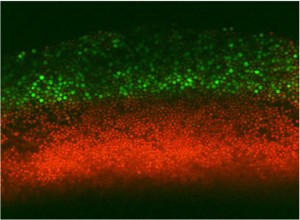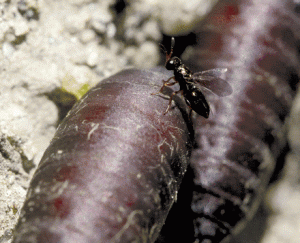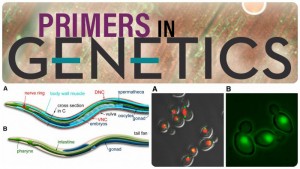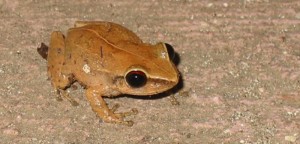Enter your address to receive notifications about new posts to your email.
Science & Publishing
-
Science & Publishing
Fungal signaling illuminated by undergrad researchers
Versatile and ubiquitous, G-protein coupled receptors (GPCRs) are the busybodies of eukaryotic signaling. This diverse group of stimulus-sensing membrane proteins are involved in countless aspects of growth, development, immunity, metabolism, and response to environmental conditions. In the latest issue of G3, Cabrera et al. report phenotypic and gene expression data for more than 80% of…
-
Science & Publishing
G3 Editor-in-Chief named to Order of Canada
Brenda Andrews, Editor-in-Chief of the GSA journal G3: Genes|Genomes|Genetics, has been named Companion to the Order of Canada, one of the country’s highest civilian honors. Established in 1967 by Her Majesty Queen Elizabeth II, selection to the Order recognizes outstanding achievement, dedication to the community, and service to the nation. Companion to the Order of Canada is…
-
Science & Publishing
Clarity within the complexity of human breast cancer
With about 1 in 8 women in the United States expected to develop breast cancer in their lifetime, breast cancer remains the most common malignancy in women. Though heavily studied, its complexity creates significant challenges to diagnosis, prognosis, and treatment. One of the major problems is that causal DNA mutations of the disease vary from…
-
Science & Publishing
Best of 2015 on G2G: Science & Publishing
Catch up on 2015’s most popular Science & Publishing posts! Undergrads power genomics research With 1014 authors, an article by Leung et al. in the May issue of G3 has the largest author list of any paper published in the journal. More than 900 of those authors were undergraduate students when they performed the research. Human…
-
Science & Publishing
Structure in yeast colonies
Compared to a human, a tree, or a jellyfish, the single-celled yeast might seem like a loner. Multicellular organisms like plants and animals are complex co-operative structures made of many specialized cell types, while a single yeast cell can survive and proliferate without the help of others. But although you might think of yeast as…
-
Science & Publishing
Collaboration is key: Faiz Kabbinavar’s undergraduate research experience
Publishing research in one of the GSA Journals as an undergraduate is a significant and valuable authorship experience and we want to hear your story (even if it was published years ago!). GSA’s Spotlight on Undergraduate Research showcases GENETICS and G3: Genes|Genomes|Genetics authors who were undergraduates when contributing to their paper. Faiz Kabbinavar Undergraduate Institution: University of Pittsburgh…
-
Science & Publishing
New in G3: POPSEQ in wheat, strawberry sex determination, and germline genes in the Jewel Wasp
Check out the December issue of G3! Meeting Report Meeting Report: Fungal Genomics Meets Social Media: Highlights of the 28th Fungal Genetics Conference at Asilomar Michelle Momany, Antonio Di Pietro, William G. Alexander, Bridget M. Barker, Omar S. Harb, Sophien Kamoun, Francis Martin, J. Chris Pires, Jason E Stajich, Bart P. H. J. Thomma, and…
-
Science & Publishing
Introducing undergrads to primary literature in GENETICS
If you’re doing it right, teaching undergraduates is incredibly difficult. Delving into the scholarship of teaching and learning can be absolutely overwhelming, especially if the principles of Vision & Change are new to you. Preparing excellent activities, making sure that students are engaged, redesigning a course so that it’s “flipped”- all of these things take…
-
Science & Publishing
December GENETICS Highlights!
The December issue of GENETICS is out now! Check out the Highlights below or the full Table of Contents here. ISSUE HIGHLIGHTS The nature of genetic variation for complex traits revealed by GWAS and regional heritability mapping analyses, pp. 1601–1613 Armando Caballero, Albert Tenesa, and Peter D. Keightley Caballero et al. used simulations to show that, contrary to previous results, common…
-
Science & Publishing
Looking for cancer’s weak spots
The mutations that drive cancer formation are often found in “hub” genes that regulate many aspects of cell growth and survival. But these key genes are not always good therapeutic targets — some are even considered “undruggable.” In the latest issue of GENETICS, Bailey et al. identify a strategy for fighting cancer cells that carry…
-
Science & Publishing
Frog fungus gets lazy in the lab
Amphibians around the world have been devastated by the spread of the deadly fungus Batrachochytrium dendrobatidis (Bd). But although many populations have been decimated, others have survived the same threat. One reason for such different outcomes is variation in virulence between Bd isolates. In the latest issue of G3, Refsnider and Poorten et al. investigate…












